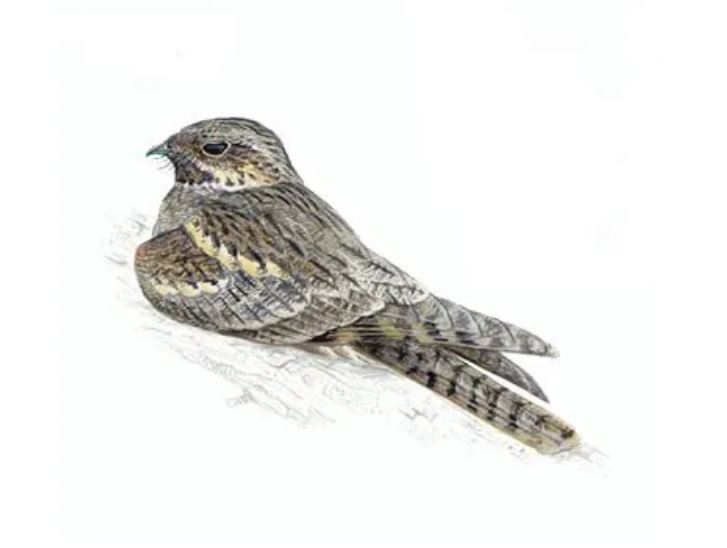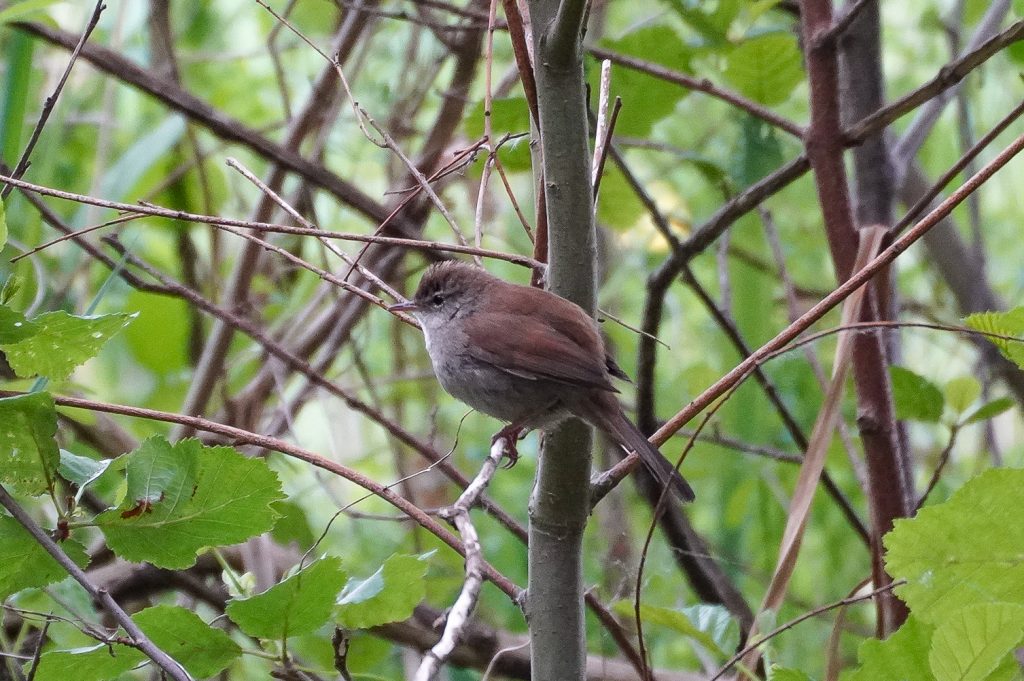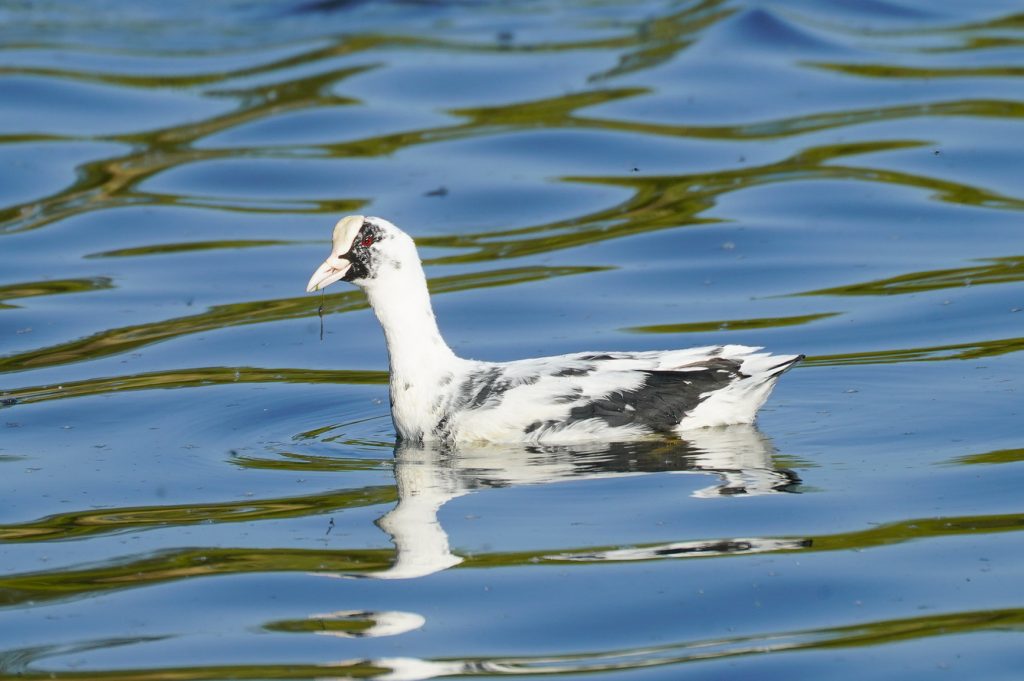What glorious spring and early summer weather we experienced! Dominating high pressure ensured plenty of sunshine throughout. Temperatures continued to be above average with the UK recording its third warmest April quickly followed by the warmest June on record, including several heatwaves. While the occasional frontal system managed to breakthrough from the Atlantic to cool things off, this was the exception, consequently rainfall totals were well below normal throughout the quarter. Despite the fine weather, spring migration provided plenty of scarce migrants before the birding focus turned to monitoring the reserves breeding birds.
Spring Migration: April-May
On the back of season’s first sightings of Willow Warbler, Blackcap, Sand Martin, House Martin and Swallow in March, April provided the first Whitethroat, Sedge Warbler and Reed Warbler all on 13th, Garden Warbler on 18th and Common Swift on 24th. Hirundine numbers continued to build as the month progressed including late afternoon gatherings of 75 Sand Martins on April 13th and 21st and 75 (Barn) Swallows on the morning of 23rd, while House Martins peaked later in the spring with 60 on May 15th.
Late departing winter migrants included Redwing up until April 9th, with a very late sighting of the latter passing over northwest on April 24th. A female Goosander flew over heading east on April 4th while sightings of Teal continued into May with the last report being of a pair on the late date of May 14th. Single male Mandarin Ducks were observed on May 2nd and 15th.
The usual scattering of migrant waders put in fleeting appearances, the most notable being a summer plumaged Bar-tailed Godwit (image right) 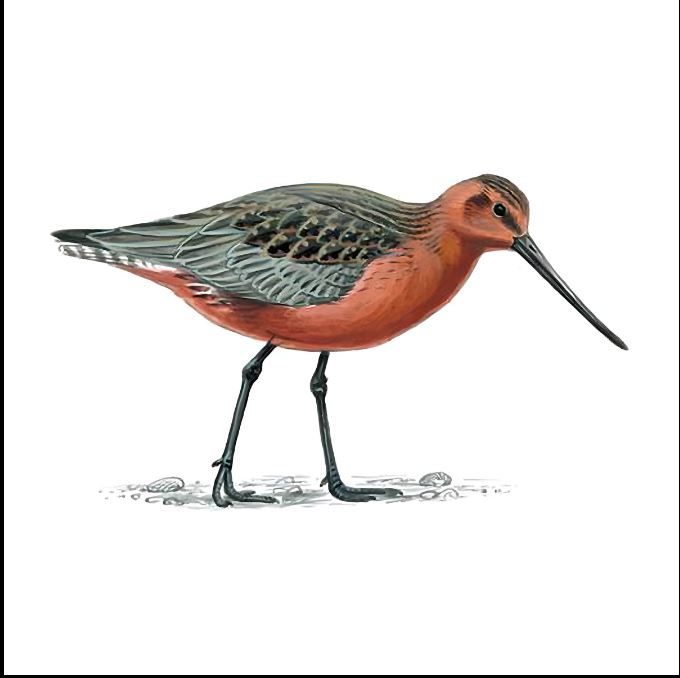 which briefly landed on one of the aquatic plant cages early in the morning on April 23rd before leaving southeast. This is the first record of this scarce migrant at the reserve since the spring of 2020.
which briefly landed on one of the aquatic plant cages early in the morning on April 23rd before leaving southeast. This is the first record of this scarce migrant at the reserve since the spring of 2020.
Other migrant shorebirds included flyover Little Ringed Plovers on April 4th (two) and 5th, a Greenshank early on April 19th, Oystercatchers on four dates including two on April 16th and May 20th and Common Sandpipers on April 14th, 20th and 30th (two). Migrant gulls and terns were again a little disappointing with the exception of Little Gulls which logged 12 different individuals between April 5th and 12th including five on 5th, two on 6th and three on the 8th. Migrant Black-headed Gulls peaked at 500 on the evening of April 7th and 39 Lesser Black-backed Gulls were logged heading over northeast between April 4th-21st. Only one Arctic Tern was sighted, dropping in briefly early on April 24th but it didn’t stay long. Common Terns (pictured below by William Legge)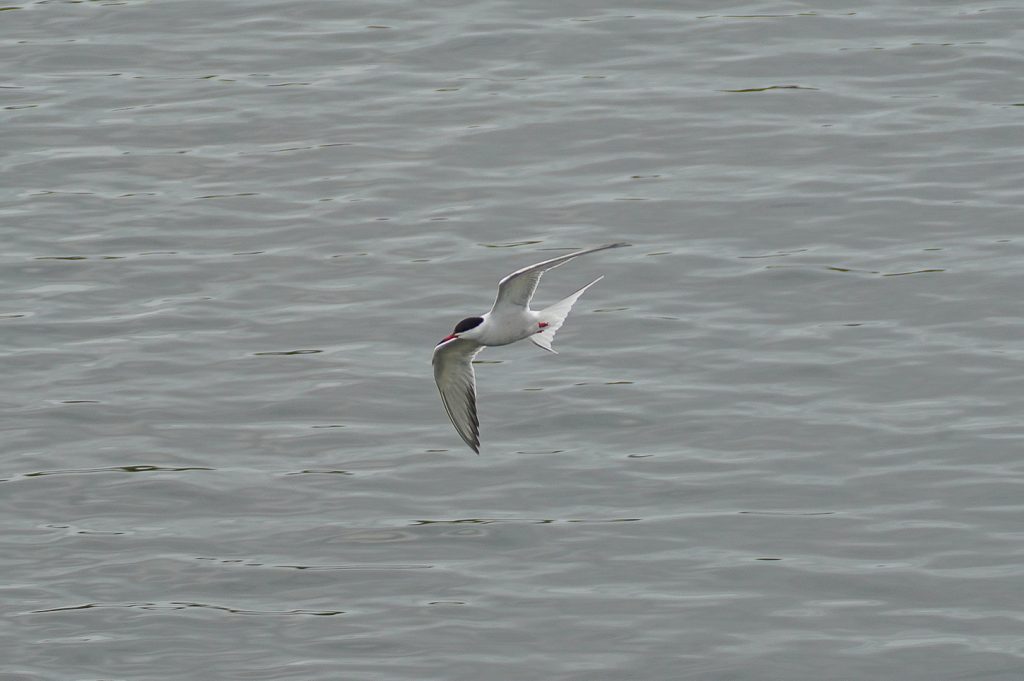
were again scarcer than usual with the first of the spring reported on April 20th with two passing through northeast on April 24th before a single arrived on May 3rd and encouragingly took up territory.
Other notable migrants included an Osprey on April 4th which briefly hovered over the Pond in search of fish before departing north and a pair of Peregrine Falcons circling the reserve on the same date. Egrets included this last winter’s Great White Egret which was last seen on April 20th, a Cattle Egret perched in the heronry on April 21st and up to six Little Egrets in April and early May. Scarcer passerine migrants included a Wheatear on the Dry Heath on April 12th and one of the highlights of the spring, a flyover Corn Bunting (below) on April 21st 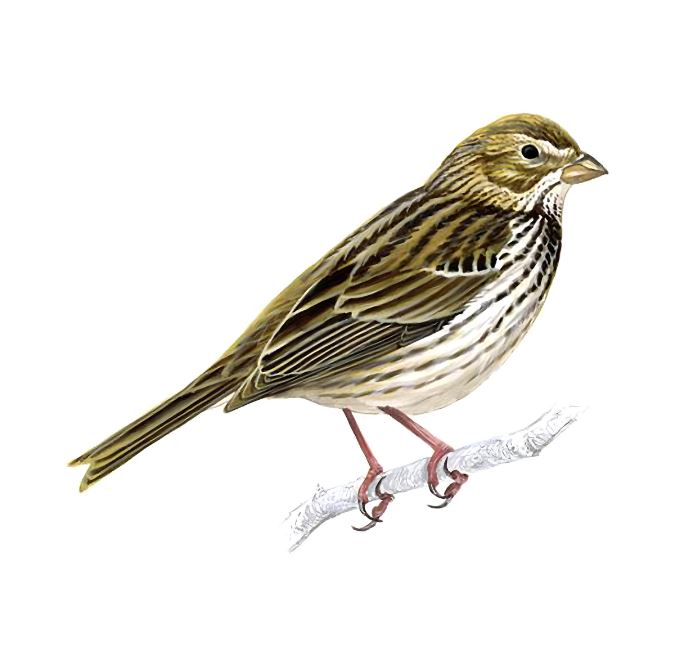
heading low over the Pond purposefully north northwest. This is the first confirmed record of Corn Bunting for the reserve and the 230th species of bird to be recorded at Fleet Pond since 1970. The one and only Cuckoo of the spring was logged on the late date of May 23rd.
The Breeding Season
As anyone who has visited Fleet Pond over the past few months can attest, the abundance of wildfowl and other water birds at the Reserve this breeding season has been impressive. Continued good water quality and plenty of aquatic plant growth within the main pond has ensured a productive breeding season. In particular, it has been a record year for Gadwall with 11 broods (including two on the Little Pond), up from eight broods in 2024 and Great Crested Grebes with four successful pairs on course to raise eleven young. The number of broods of Tufted Duck and Mallard are estimated at 15 each, both down on 2024’s record totals, but still very respectable.
However, there was less good news to report on Pochard and Shoveler. While up to three pairs of Pochard were present in early May and nesting likely occurring, no young were sighted. Up to four Shoveler were present in early May (a female and three males), with a male sighted several times later in the month, no breeding is thought to have occurred. Two pairs of Mute Swan bred, one on the main pond with seven cygnets (down from eight) and a second pair with up to nine cygnets on the Little Pond. Breeding geese comprised five pairs of both Canada and Greylag Geese (a new record) and a pair of Egyptian Geese. Success was limited with only the Canada Geese on course to fledge 10-15 young. All five broods of Greylag Geese (27 goslings in all) disappeared within days of hatching, a recurring theme at Fleet Pond, so speculation is growing that the Pond’s breeding Greylag Geese may be quickly relocating their young to greener pastures at nearby North Hants Golf Course, quite the journey for days old goslings! None of the Egyptian Geese goslings survived.
A survey of the Black-headed Gull colony suggest 45 pairs have nested on the Central Islands, up on last year’s 20-25 pairs. The single Common Tern on territory in early May managed to attract a mate by mid-month and the pair settled down to nest on one of the aquatic plant cages; on the face of it, a very unsuitable nesting site! Amazingly, the pair are on course to fledge two young, the first confirmed successful breeding of Common Terns at Fleet Pond since 2015.
The newly restored Coldstream Marsh attracted pairs of both Lapwing and Little Ringed Plover, with the former suspected of nesting unsuccessfully while Little Egrets once again flirted with nesting in the Grey Heronry with one seen carrying a stick and a pair copulating in early-May, but nothing seems to have come of this.
The real surprise of the breeding season was the discovery of a pair of Nightjars (image below)
on Dry Heath on June 24th and subsequently seen on June 29th. Even though it is turning out to be a bumper year for Nightjars in southern England this summer, the discovery of pair within the boundaries of the Reserve was most unexpected, a very pleasant surprise and constitutes the first ever breeding record for Fleet Pond.
Notable breeding passerines included seven Cetti’s Warbler (pictured below by William Legge) territories in early May (up from 6 in 2024),
three to four Garden Warblers, at least six Whitethroat territories, one Willow Warbler territory (Dry Heath), five Firecrest territories, and two pairs of Stonechats and a Linnet territory on the MoD Common.
Post Breeding Arrivals
Post-breeding and early Autumn migrants started to appear in mid-June, with the most notable being the arrival of five Little Grebes on June 19th, including two juveniles (one on the Little Pond). Both Gadwall and Coot numbers increased substantially in June with monthly highs of 145 Gadwall and 150 Coot on June 12th, attracted by the abundant growth of Lesser Pond Weed.
This building-up included an adult leucistic Coot, (pictured below)
a rare plumage aberration with 75% of its plumage being white versus the usual uniform dark grey. First sighted on April 30th it remained present throughout the period. The first returning Shoveler (male) was sighted on June 30th while the only notable evening roost reported was of 50 Starlings on June 15th.
With high numbers of waterbirds and autumn migration about to start building steam there will be plenty to find over the next few months. Good Birding!
William Legge
Bird photographs: William Legge
Bird illustrations: RSPB www.rspb.org.uk/birds-and-wildlife/wildlife-guides/bird-a-z/
Contributing Observers: Arun Bose, John Clark, Tom Cutler, Andy & Nikki Golder, William Legge, Sarah Slingo, and Graham Stephenson.

